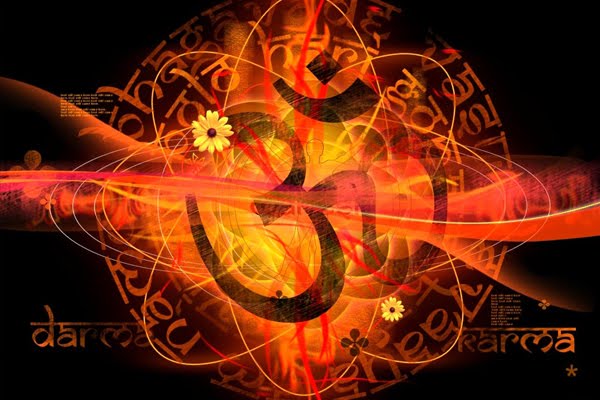Namaste, Hari Om,
Calendar Date of Fast: June 11, 2011 - ‘Nirjala’ means without water and devotees do not drink water on the day of fasting. The greatness of Nirjala Ekadasi was explained to Bhima, the second of the Pandava Brothers, by Sage Vyasa. (below talks about Ekadashi, and how to observe it)
Ekadashi is very important, its stated in many books including the Ramayana; The chapter on the importance of Ekadashi was read: ‘The merit gained by performing a hundred Rajsuya yagnas or a thousand Ashwamedh yagnas don’t come into comparison with even a 16th of the merit gained by performing the Ekadashi vrat.’
Again we always should ask why is this important to me? And why should I do this, understanding these questions will make us believe what we do even more, it becomes non mechanical and spiritual.
Fasting on these days are important because it does many things, it conditions the mind and body for looking within and meditating. Secondly its important to you because its another way of feeling and showing devotion to that almighty power. We can build connections and understanding with the special power of the universe by connecting with thy name while performing various tasks in our mind. For those that challenge fasting, devotion and contemplation of God, they should first try to do these things with a clear calm mind. Having a truthful mind will always make your mind calm, when your mind is calm the benefits (both physical and spiritual) will enhance your everyday outlook. Following Ekadashi is spoken by the very words of Lord Vishnu, in our lives we are given moments to propel our dedication and these days of Ekadashi we can do this by vrat or fasting and contemplation of the Lord.
Scientifically there are special energies, atoms or light that is on earth due to the star/planet alignment - Thus having our bodies and minds in a special condition causes a better receptor to this energy that cleanses our being.
There is a nice post on Hindu Blog that talks about this fast, its equivalent to fasting for all 24 Ekadashi's, if you fast on this very day. Continue reading, hopefully we all can follow this Vrat.
**Remember: What is more important is devotion and not the severity of the fasting. Dont feel that you have to give up your life to attain a connection, #1 that connection exists, #2 feel the love in what we do, this is more important than anything else.
Jai Shri SitaRam
- SimpleHinduBhai
From Hindu-Blog.com:
Nirjala Ekadashi is very popular Ekadasi fasting and it is performed by man Hindus without even drinking water. Nirjala Ekadasi June 2011 date is June 12 [SHB Note - June 11 for US Folks]. Nirjala Ekadasi fasting is very tough and different from the usual Ekadasi fasting method. Devotees do not drink water on the day. Neither do they eat anything for the entire day. The fasting is from sunrise to next day (Dwadasi) morning sunrise.
The popular belief is that observing Bhim Ekadasi is equal to observing all the 24 Ekadasis in a year.
Nirjala Ekadasi Story
Nirjala Ekadasi is associated with Bhima, the second of the five Pandava brothers. There is a popular story associated with Bhim Ekadasi. Bhima was always hungry and he could not fast during Ekadasi. Therefore he wanted to find a solution to fast on Ekadasi by consuming food and he went to Sage Vyasa to find a solution Veda Vyasa advised Bhima to observe Nirjala Ekadasi falling in the Shukla Paksha of Jyeshta Month. It has the benefits of observing all the 24 Ekadasis in a year.
How to Observe Nirjala Ekadashi:
Nirjala Ekadasi, or Pandav Bhim Ekadashi, is observed during the Jyeshta Shukla Paksha – waxing phase of moon in Jyeshta month, which falls during (May end or June beginning). The Ekadasi fasting method for Nirjala Ekadashi is different from the usual practice. In 2011, the date of Nirjala Pandav Bhim Ekadasi is June 12.
Nirjala Ekadasi is one of the toughest fasting in Hinduism. ‘Nirjala’ means without water and devotees do not drink water on the day of fasting. The greatness of Nirjala Ekadasi was explained to Bhima, the second of the Pandava Brothers, by Sage Vyasa.
It is said that one should not drink water from the moment of sunrise on the Ekadasi day and should drink water only on the sunrise on the day of Dvadasi (next day morning). Devotees also do not eat food on the day.
In the scriptures, it is said that a devotee should perform the purification ritual by drinking water that can immerse a single mustard seed.
Devotees spend the day at Vishnu temples or listening to stories from Bhagavad Purana or by chanting bhajans dedicated to Lord Vishnu. Vishnu Sahasranama and other sholkas dedicated to Lord Vishnu are chanted on the day.
It is strongly advised that those who are under medications and have some ailments should not observe Nirjala Ekadasi.
Those devotees who want to observe this particular Ekadasi but can’t follow the rule of not drinking and not eating on the day can observe a partial fast. What is more important is devotion and not the severity of the fasting.
This Ekadasi fasting happens before the starting of the monsoon season and therefore it is also meant in helping in cleansing the body.








